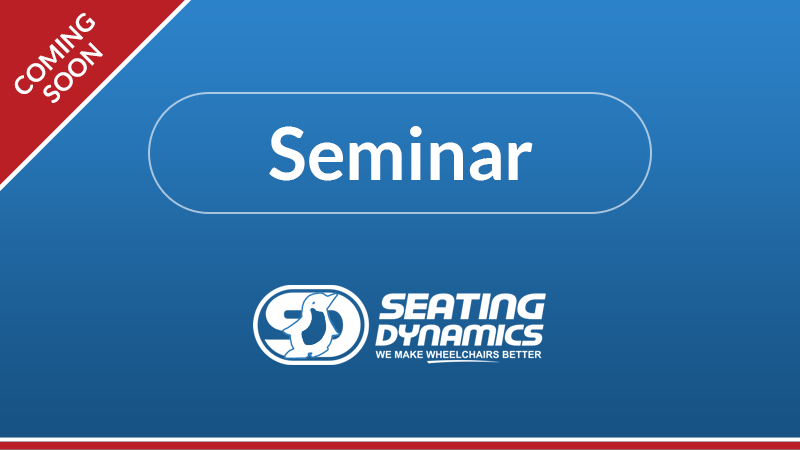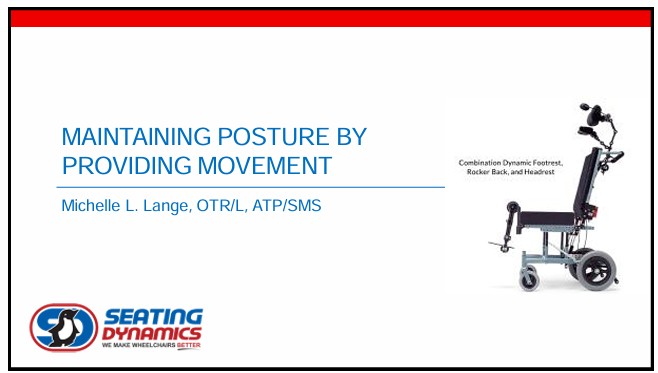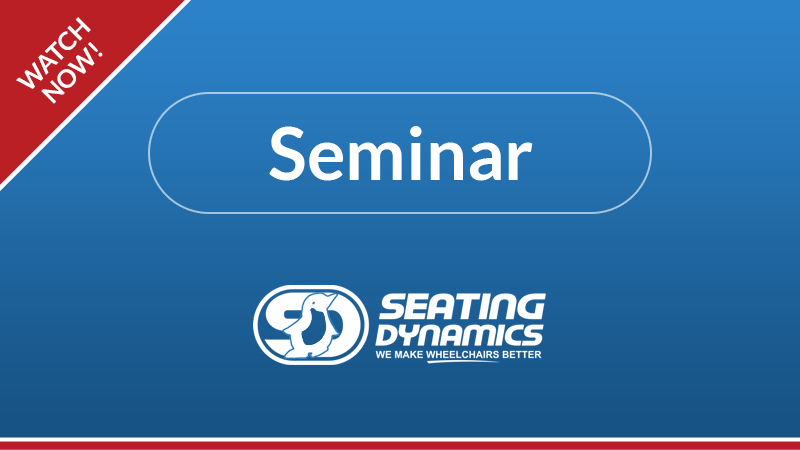Free CEU 11/12: Dynamic Seating: a Series of Case Studies, part 2
Join us as we explore 3 new clients and how Dynamic Seating has met their specific needs.
Free CEU 8/13: How Do I Know If a Client Needs Dynamic Seating?
In this new live course on 8/13, we will review what you can observe that indicates a client could benefit from Dynamic Seating.
Free CEU: Maintaining Posture by Providing Movement
Join us for an on demand webinar that dives deep into exactly how clients lose optimal posture within their seating systems and how to maintain posture through movement.
Free CEU: Dynamic Seating and Power Wheelchairs
Dynamic Seating can be used successfully on a power wheelchair, though there are unique parameters which must be considered.
Free CEU: Dynamic Seating: Moving past perceived barriers to provision of needed interventions
Join OT Michelle Lange for Dynamic Seating: Moving past perceived barriers to provision of needed interventions with IACET CEUs provided by NRRTS as an authorized provider.
Free CEU: Dynamic Seating, a Series of Case Studies
In this webinar we explore clinical applications of Dynamic Seating through a series of case studies.
Free CEU: Muscle Tone and Tone Management: Dynamic Seating Intervention
Join OT Michelle Lange for this free CEU accredited webinar on Muscle Tone and Tone Management: Dynamic Seating Intervention.
Free CEU: Muscle Tone and Tone Management: General Positioning Strategies for Clients with Increased Tone
Join OT Michelle Lange for this Free CEU on Positioning Strategies for Clients with Increased Muscle Tone.
Free CEU: Positioning the Head
Join OT Michelle Lange for Positioning the Head to explore strategies beyond the head support of a wheelchair, including specific positioning interventions and addressing visual issues.
Conference for Assistive Technology and Education (CATE) 2025
OT Michelle Lange presents “Wheelchair Dynamic Seating: Providing Movement for Clinical Benefit” at the 2025 Center for Innovative Design and Engineering (CIDE).




